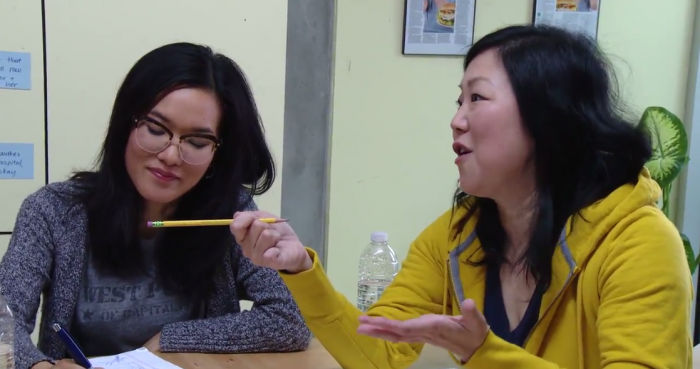Story by Susan Soon He Stanton
When Ting Shih was an M.B.A. and systems engineering student at the Massachusetts Institute of Technology in 2007, she was given the challenge of creating a health care business that would serve a billion people. She came up with a simple yet highly effective idea that is revolutionizing global health care. Shih realized that in developing countries with scarce access to health care, “most people have mobile phones, even before they have electricity.” Thus, the idea for ClickMedix was born: using mobile phones to deliver health care to underserved communities.
Today, ClickMedix serves over sixteen countries by implementing remote health care systems accessible via smartphone or the Web to facilitate physicians and health workers to increase their reach faster and more cost-effectively. Think the Amazon of the health care industry. And for her innovation, this past April, Shih was honored at the Women in the World Summit as a Toyota Mother of Invention, an award recognizing remarkable women who use innovation to make a difference in the world.
“The key word is people,” Shih explains. “Before you even tackle the issues of the health care market, you need to address people’s access to it.” In her field research leading up to the launch of ClickMedix, she learned that there were not enough doctors and even fewer specialists in Africa, and yet nearly all of the population had access to mobile phones. She also discovered, as she followed doctors around, that the process with which doctors collect information is the same, no matter the disease. “You screen patients with particular symptoms, you identify the diagnosis and treatment, then you follow up with that patient to see if the treatment is effective.”
Shih describes ClickMedix’s process in India to diagnose and treat ear infections. Using ClickMedix software on Android phones, health care workers are prompted to ask a series of questions and take photos of the ear with a Medtronic otoscope. They then make a provisional diagnosis and offer treatment, such as antibiotics or cleaning. The information is transmitted to a remote ear, nose and throat surgeon, who makes the final decision of whether the condition is urgent and the patient needs to see a specialist. In this way, over 100,000 patients can be screened by just 10 or so health care workers who are local to the area. Despite the fact that many of these health care workers only have a primary education, their training allows them a meaningful career opportunity serving their community.
And it’s not just ear infections. During a research pilot in Botswana, Shih found that trained midwives using the camera on their phones were about 90 percent as accurate as the leading women’s health experts in cervical cancer screenings. Applying this process, ClickMedix software is now capable of diagnosing and treating almost any disease or ailment, including heart disease and cancer. In the U.S. and Latin America, ClickMedix focuses on diabetes, but worldwide the software is used for dermatology, HIV/AIDS management, malaria and even mental health. And with the $50,000 received as a part of the Toyota Mother of Invention award, Shih plans on training over 10,000 maternal health professionals in emergency care to save the lives of pregnant mothers and newborns in Mexico.
Shih explains that starting out, the greatest challenge was not convincing people to come onboard. “Most doctors were excited about the technology,” she says, especially because ClickMedix focuses on emerging markets where there is virtually no health care available. And because ClickMedix gathers all of the necessary information doctors need to make their diagnosis, there is a 50 percent reduction in unnecessary physician visits, and by making more effective use of specialists’ time, patients are getting better quality results.
Rather, the greatest difficulty has been creating sustainable models. “We learned the hard way that many emerging markets are grant funded, which means our entire technology and many of our doctors have to pack up and leave when the money runs out at the end of the grant period if there’s no continual funding. It’s really sad,” says Shih. To that end, ClickMedix is developing an international, scalable model that can be replicated anywhere and that won’t disappear when the grant money runs out by working with partners to build financially sustainable services.
Speaking with Shih, it’s clear her vision spans the globe. Always thinking of new communities to serve who do not have access, she is working with public health nonprofit AMAR to try to get Toyota to donate vans with medical equipment, transforming them into mobile clinics to serve women in refugee camp areas, especially in the Middle East. Shih is concerned that when the U.S. troops completely pull out of Iraq, the population will be in grave danger and without access to medical services.
“The ultimate goal is to have one-click health care,” Shih said at the Women in the World Summit. “Just like we have GPS to take you anywhere in the world, why can’t we have a GPS of health care? Whether you have cancer or heart failure, you should have a one-click portal to get to the rest of the doctors and care that you need.”
Because ultimately, Shih believes that “it doesn’t matter where you live, who you are, what gender or income level you are, everyone needs health care.”
This story was originally published in our Summer 2015 issue. Get your copy here.





